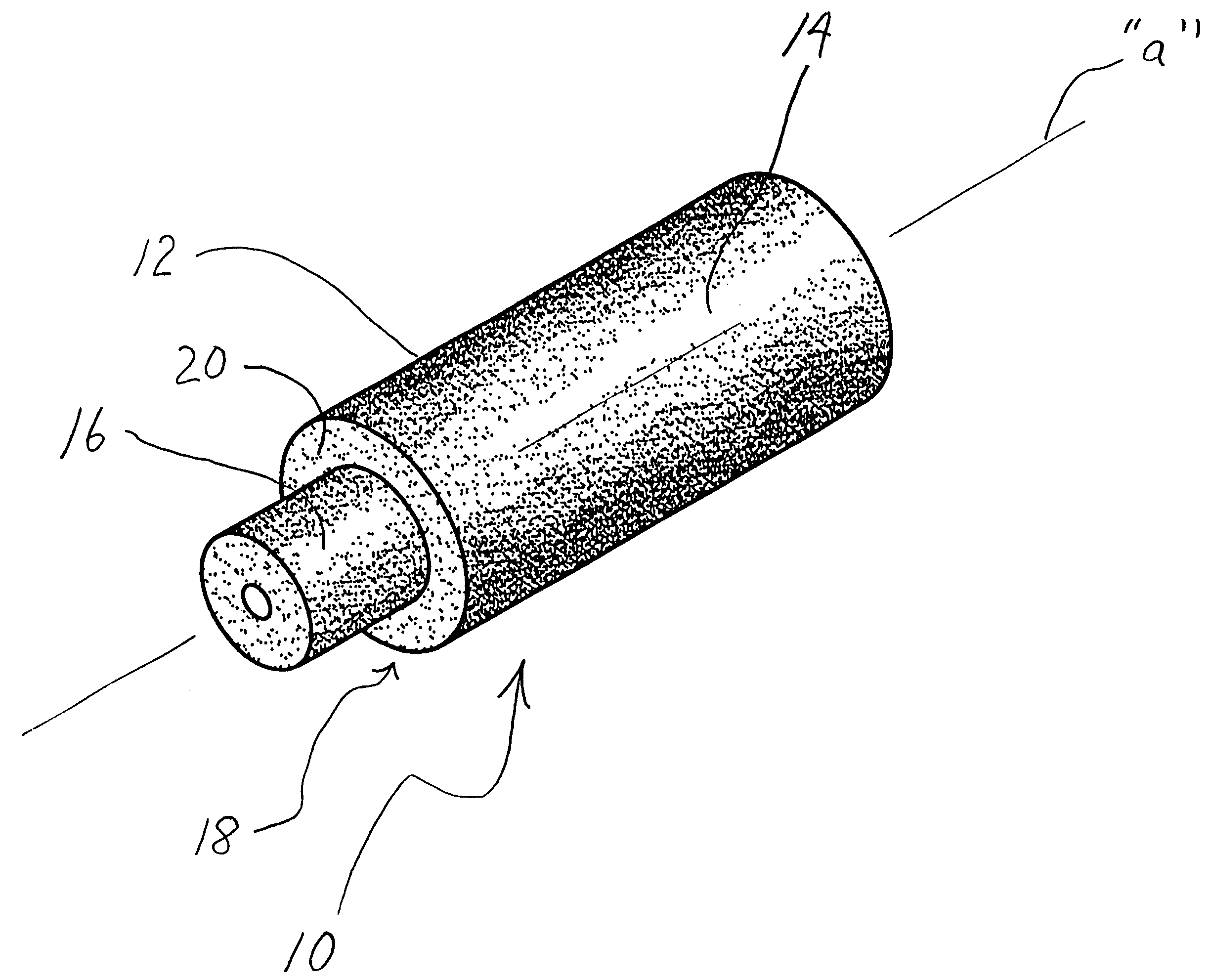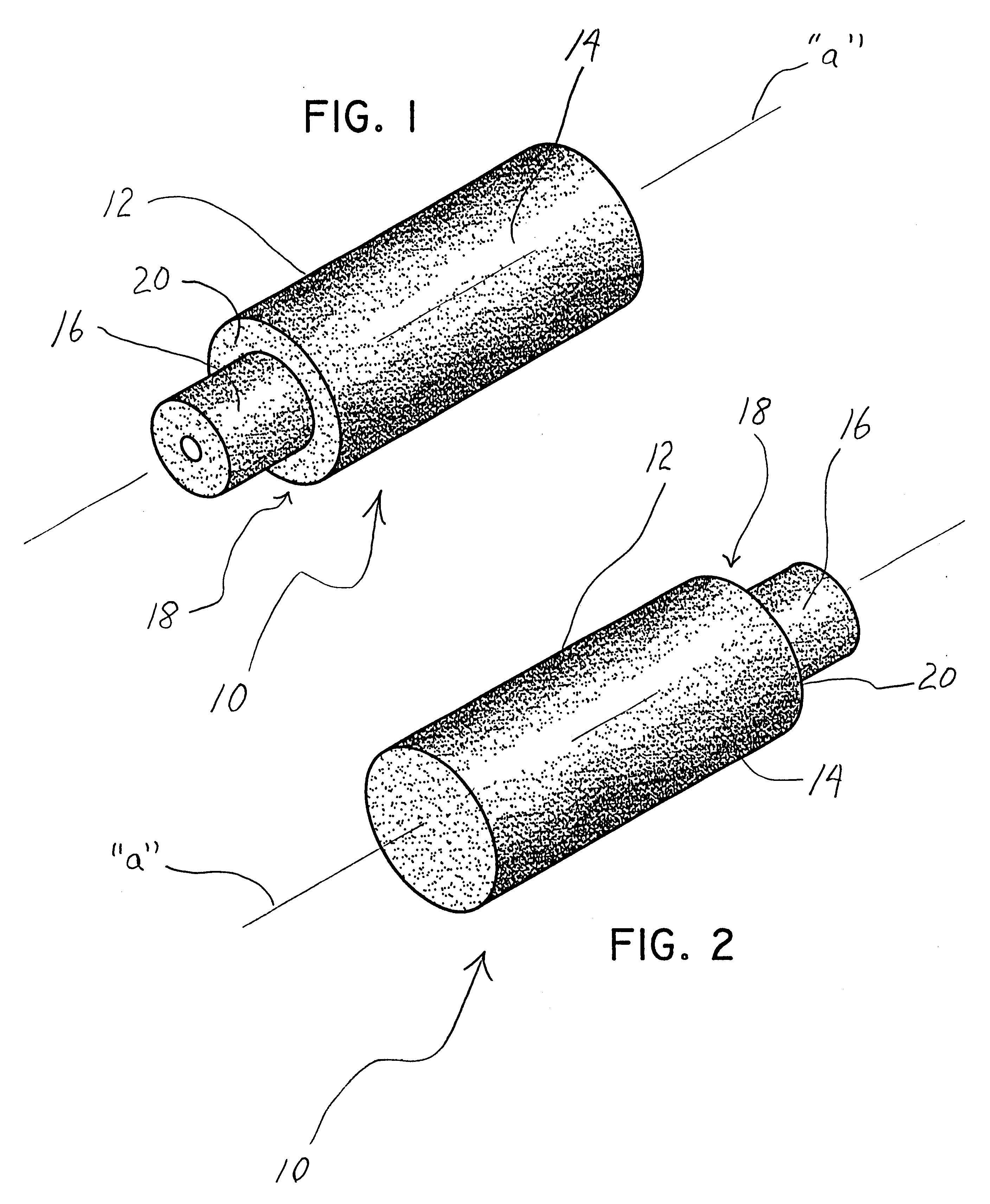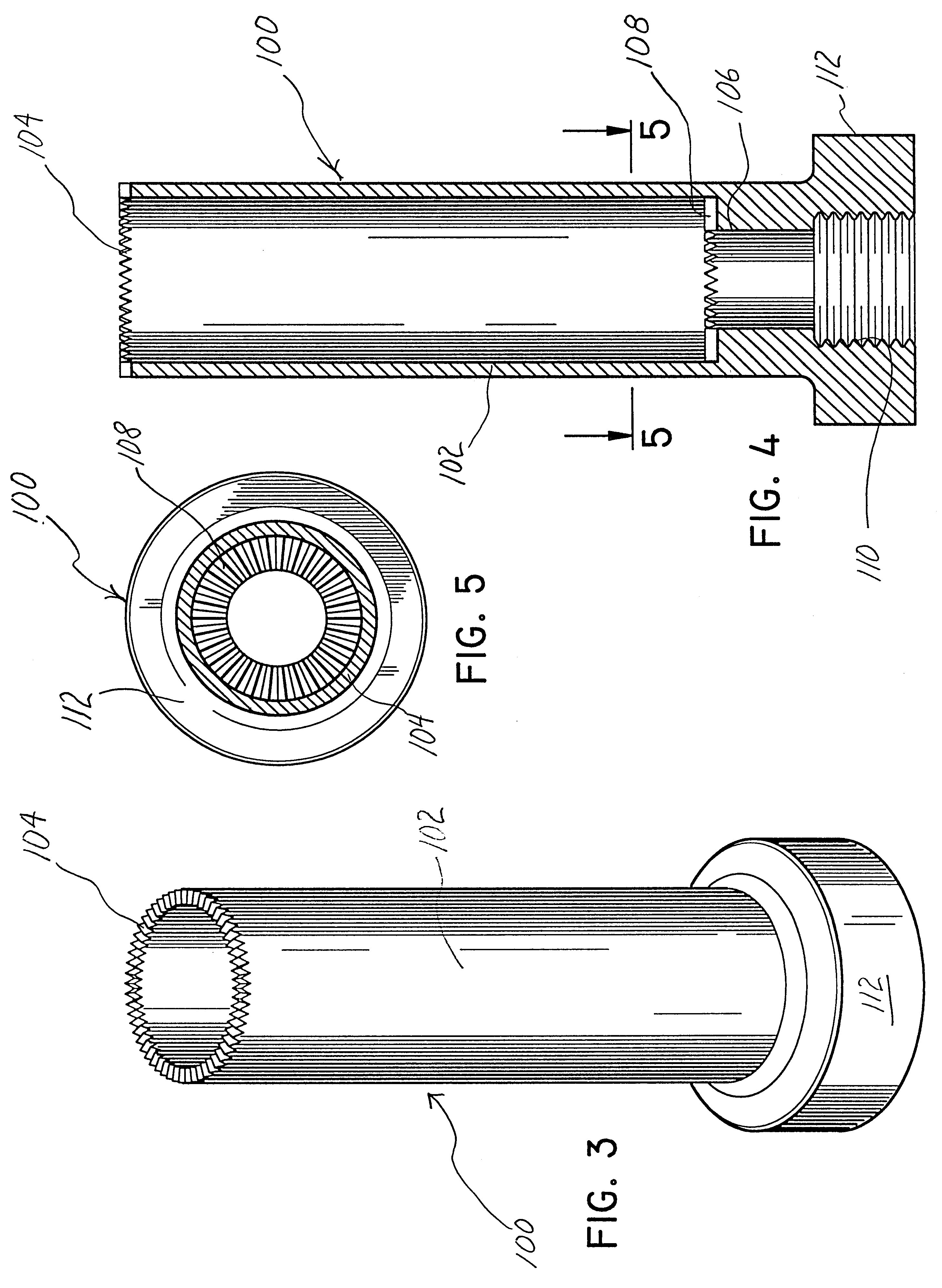Fusion implant device and method of use
a fusion implant and implant technology, applied in the field of osteogenic interbody fusion implant devices, can solve the problems of implant fitting certain ideal criteria for interbody fusion grafts, implant compression near the affected area, and irritated nerves,
- Summary
- Abstract
- Description
- Claims
- Application Information
AI Technical Summary
Problems solved by technology
Method used
Image
Examples
Embodiment Construction
FIGS. 20-25 illustrate alternate embodiments of the stepped fusion implant of the present invention. Fusion implant 40 of FIG. 20 is a multi-step configuration defined by a plurality of alternating sections 42, 44 of different cross-sectional dimensions. In particular, implant section 42 has a first diameter which is less than the diameter of second implant section 44. The junctures of the first and second implant sections 42,44 define stepped regions with retaining surfaces 46 which engage corresponding structure defined by the receiving bed within the adjacent vertebrae. FIG. 21 illustrates another multi-step implant 50 where the implant sections 52,54, 56,58 sequentially increase in cross-sectional dimension from one end of the implant to the other end to define a multitude of retaining surfaces 53,55,57. FIG. 22 depicts a single step fusion implant 60 similar to the implant of FIGS. 1-3. However, in accordance with this embodiment, it is contemplated that the smaller implant sec...
PUM
 Login to View More
Login to View More Abstract
Description
Claims
Application Information
 Login to View More
Login to View More - R&D
- Intellectual Property
- Life Sciences
- Materials
- Tech Scout
- Unparalleled Data Quality
- Higher Quality Content
- 60% Fewer Hallucinations
Browse by: Latest US Patents, China's latest patents, Technical Efficacy Thesaurus, Application Domain, Technology Topic, Popular Technical Reports.
© 2025 PatSnap. All rights reserved.Legal|Privacy policy|Modern Slavery Act Transparency Statement|Sitemap|About US| Contact US: help@patsnap.com



